Exhibits
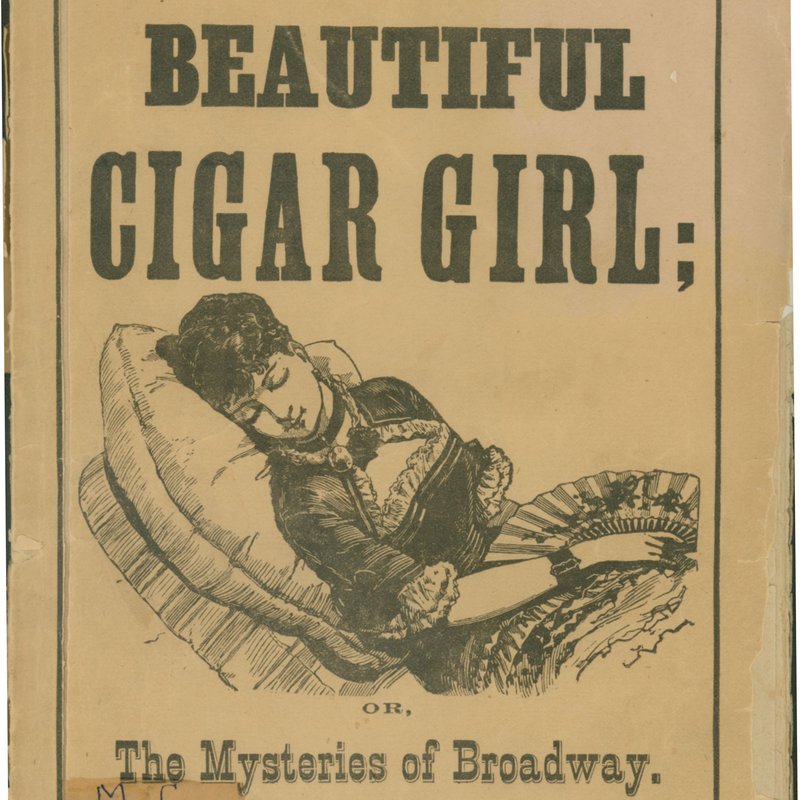
Joseph Holt Ingraham
The three short stories written by Edgar Allan Poe featuring the deductive reasoning of French detective C. Auguste Dupin are considered defining moments in the development of the detective mystery genre. In “The Mystery of Marie Roget” (1842) Poe loosely based the circumstances of his fictional crime upon the real-life disappearance of a famous New York cigar vendor named Mary Rogers. Two years later, Joseph Holt Ingraham published a second and opposing fictional resolution in La Bonita Cigarera; or The Beautiful Cigar-Vender and its sequel Herman de Ruyter; or, The Mystery Unveiled. Displayed here is an undated compilation of these two volumes under the single title The Beautiful Cigar Girl; or, The Mysteries of Broadway.
Ingraham, with over one hundred titles to his credit, was one of the most prolific authors of his era. Born in Maine, he moved to Natchez in 1830 (after allegedly participating in a South American revolution) and began writing well-received historical romances. Poe’s literary reviews of three of these early novels ranged from lukewarm to dismissive, and the critic included a slighting description of Ingraham in his 1841 magazine series “Autography.” Scholar Mark A. Keller has suggested that Ingraham chose to write La Bonita Cigarera, as a satirical retaliation. While Poe resolved his fictional crime with the apprehension of a murderer, Ingraham reveals the heroine to be the missing heir of aristocracy, who returns to England in secrecy so as not to embarrass her wealthy relatives. New York newspapers had touted a similar outcome in the real case, despite the appearance of an unidentifiable body pulled from the Hudson River wearing Rogers’ clothes. Furthermore, Ingraham’s tale includes a deformed character known as the “Book-man” who makes misguided efforts to locate the girl -- purportedly a caricature of Poe.
Between 1843 and 1847, Ingraham produced over eighty novels – an amount that comprised almost ten percent of the total novels printed that decade. These paperbound novels, known as “story papers,” fed increasing popular demand for books and resulted from the cheap production of the steam rotary press and the inexpensive distribution offered by the growth of the railway system. Eventually Ingraham entered the Episcopal ministry and published a series of popular novels set in Biblical times. In 1860, he died in Holly Springs, Mississippi from an accidental, self-inflicted gunshot wound in the vestibule of his church.
The display features a copy of an autographed visiting card with Joseph Holt Ingraham’s photograph.
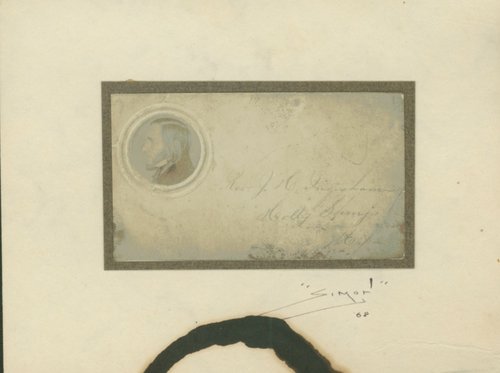
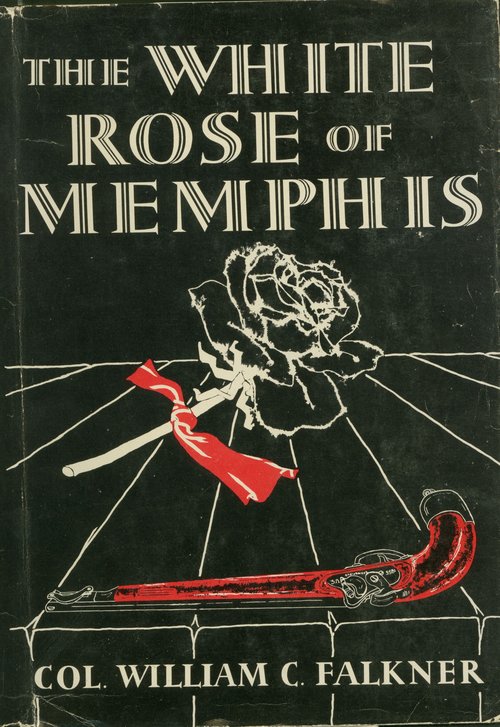
Colonel William C. Falkner
In 1880, when the office of the Ripley Advertiser burned down, Colonel W.C. Falkner not only advanced the capital required to resume operation, he also contributed an original story to re-launch the Mississippi newspaper. Beginning in August of 1880 and continuing through the following spring, the installments of Falkner’s serial novel The White Rose of Memphis caused a spike in the paper’s circulation. In 1881, publishers released both hardback and cheaper paperback formats for national distribution [link to title page], and over the next forty years thirty-five editions fed popular demand for the title. After several years out of print, Coley Taylor and the Bond Wheelwright Company released yet another edition in 1953.
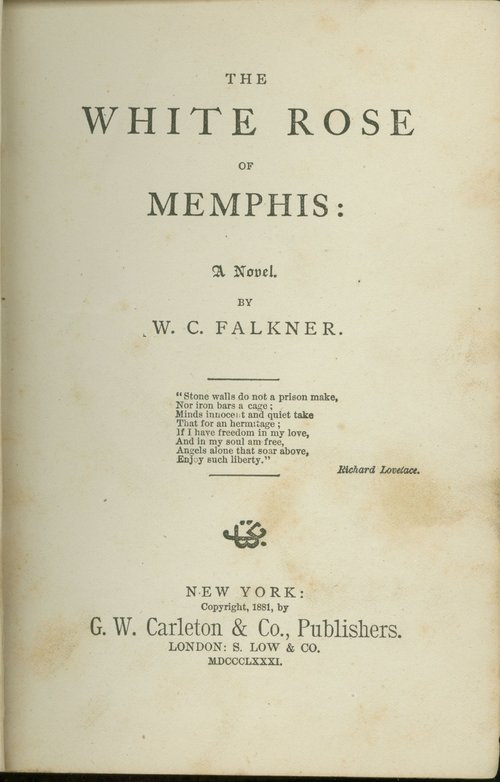
Described for years as a Southern romance, critics of the mid-twentieth century have reclassified the work as a mystery and thriller. Faked suicides, star-crossed lovers, disguised detectives, mistaken identities, and elaborate masquerades provide the melodrama surrounding a murder set in the Reconstruction South. Elements of the complicated plot echo episodes in the author’s own life. Brought to trial twice for the murder of men who had attacked him, the jury acquitted Falkner both times on the basis of self-defense. In order to prevent greater community violence, the author agreed to meet the brother of the first victim in a duel. The White Rose of Memphis is dedicated to Colonel M. C. Galloway, the man who worked out a compromise that avoided the duel and ended the feud.
On the night of his election to the Mississippi legislature in 1889, a former business associate shot Falkner in the streets of Ripley. His great-grandson, William Faulkner, would ultimately use the colonel’s life as inspiration for several literary plots and characters.
Also on display is a telegram delivered on November 5, 1889 to J. W. T. Falkner in Oxford stating that his father “this evening badly shot.”
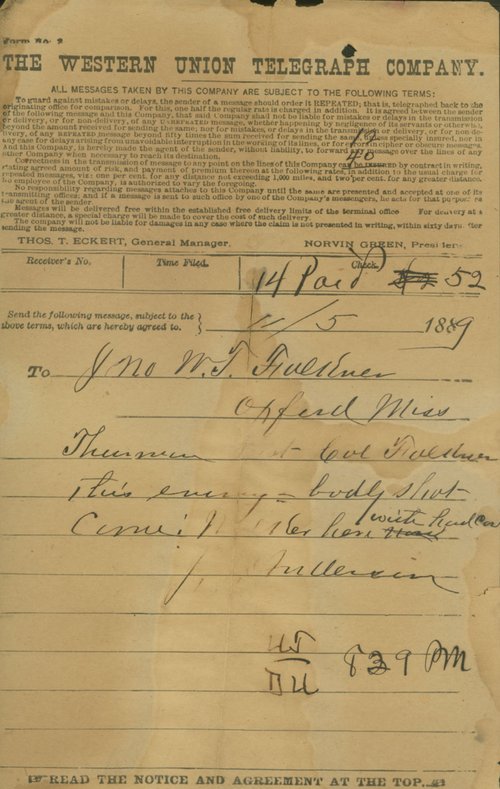
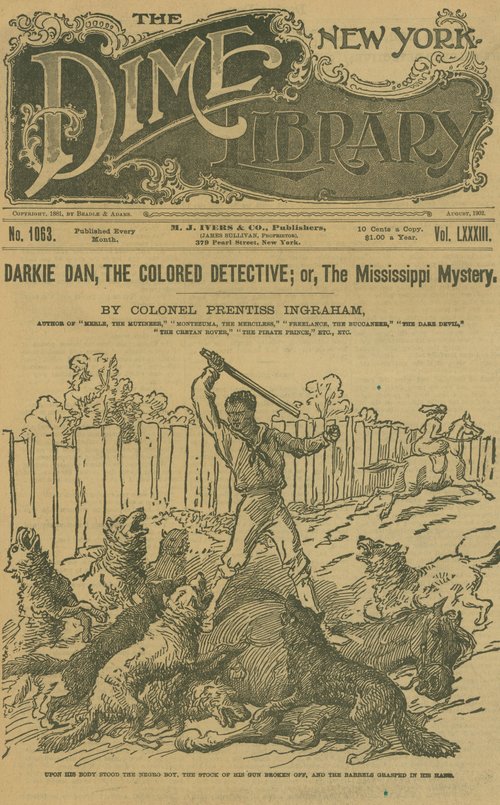
Colonel Prentiss Ingraham
The son of Joseph Holt Ingraham, Prentiss Ingraham was born in Adams County, Mississippi in 1843. At the conclusion of the Civil War, he was acting commander of Ross’s Brigade in the Texas Cavalry. Ingraham then embarked upon a career as a mercenary, fighting in the Mexican Revolution against Maximilian, the Austro-Prussian War, the conflict in Crete against the Turks, the khedive’s army in Egypt, and in Cuba’s revolt against Spain. In 1870, he followed in his father’s literary footsteps, writing tales of adventure and heroism. A prodigious author, his output includes at least 600 novels and 400 novelettes. An accurate total is difficult to ascertain because he published works under at least thirteen pseudonyms.
Most of his stories appeared as dime novels or in nickel weeklies. This form of mass market fiction began in 1860 and lasted until the rise of pulp magazines in the early twentieth century. Aimed at juvenile readers, heroes from the American West were the most popular subject matter of the period, and Ingraham became associated with the Buffalo Bill series for which he wrote over 200 titles. By the late nineteenth century, dime novels also featured mysteries, and Ingraham contributed to this genre with his Dick Doom series and other detective characters.
One of his most historically interesting protagonists appears in “Darkie Dan, the Colored Detective; or, The Mississippi Mystery” in an August 1902 edition of the The New York Dime Library. Beadle & Adams originally printed the story in 1881. Manumitted after saving his young mistress from a pack of wolves, Dan remains in faithful service to the Mississippi planter family, rescuing them from many trials involving the villainous criminal known as the “King of Diamonds.” Dan is one of the earliest African-American protagonists of the mystery genre, if not the first.
Ingraham died in 1904 while residing at the Beauvoir Confederate Soldiers’ Home on the Mississippi Gulf Coast. His stories remained in print for at least a decade after his death.
W. C. Falkner. The White Rose of Memphis. New York: G. W. Carleton & Co., 1881.
William C. Falkner. The White Rose of Memphis. New York: Coley Taylor, 1953.
[J. J. Fullerson] to Jno. W. T. Falkner in Oxford, Mississippi. Western Union Telegram. 5 November 1889.
J. H. Ingraham. The Beautiful Cigar Girl; or, The Mysteries of Broadway. New York: M. J. Ivers & Co., n.d.
-- Copy of an autograph visiting card with image of Joseph Holt Ingraham.
Prentiss Ingraham. "Darkie Dan, the Colored Detective; or, The Mississippi Mystery" The New York Dime Library (August 1902).
